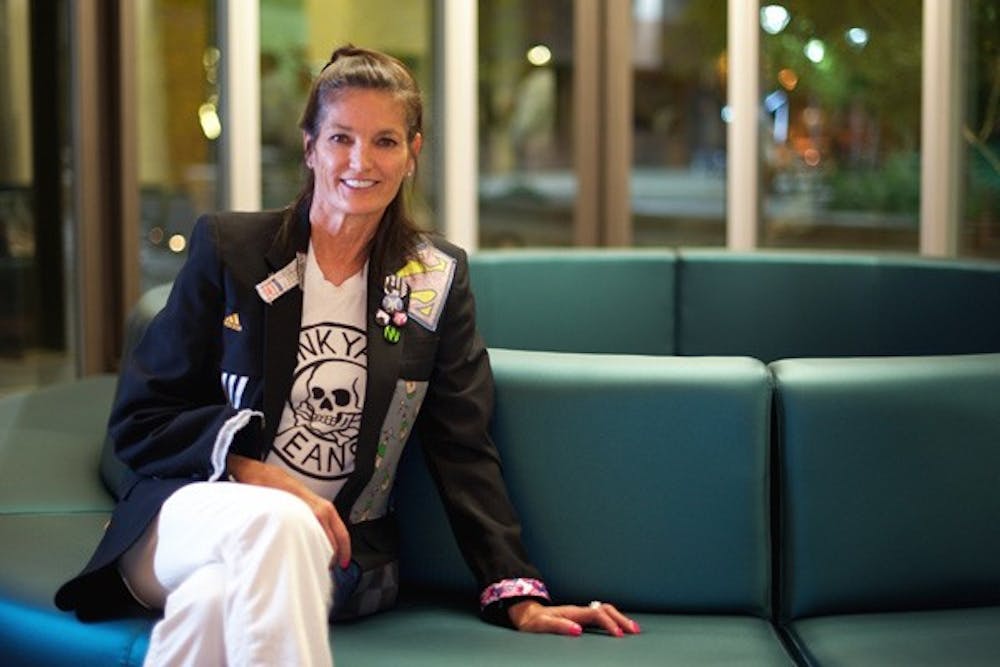In the ’60s and ’70s, movie star Steve McQueen was the King of Cool.
ASU’s Downtown campus hosted a lecture on McQueen, sponsored by the School of Letters and Sciences as part of their Annual Humanities Lecture Series.
Called “Steve McQueen: A Tribute to the King of Cool,” the lecture featured a talk and reflections by McQueen’s biographer Marshall Terrill and McQueen’s widow, Barbara Minty McQueen.
McQueen was one of the biggest stars and highest paid actors of the ’60s and ’70s, Terrill said. Some of his classic films include “The Blob,” “The Magnificent Seven,” “Bullitt” and “The Towering Inferno,” which, when adjusted for inflation, would have earned about $1.2 billion at the box office today.
“In McQueen’s time, movies were dependent on their stars. Today, it’s more about the movies themselves or their special effects,” Terrill said.
Known for being a bit of a rebel, he was considered by many to be the epitome of cool. This might have had something to do with his painful upbringing, Terrill said.
Born to young, unstable parents who were not looking to have children, Steve McQueen was passed along from family member to family member throughout his childhood, Terrill said.
At age 12, he was involved in a street gang, where he first learned to act in order to get what he wanted out of people, Terrill said.
After working a series of odd jobs until 1955, McQueen decided to try acting, he said.
McQueen landed a few parts here and there, including a prominent role on a successful television show, “Wanted: Dead or Alive.” It was not until 1963’s “The Great Escape” that he became a household name. This made him the first star to successfully transition from television to film.
“He was the King of Cool,” Terrill said. “On the one hand, he was exactly who you thought he was. But there was this whole other side to him that many never got to see.”
He lived the last few years of his life with his third wife, Barbara Minty McQueen, going on road trips, living the bohemian life and fitting into movies wherever he could. He was refreshingly un-Hollywood, said Terrill.
“I think it is important that people remember him for his life and not his death,” said McQueen’s widow, Barbara.
McQueen passed away in 1980 at age 50 of mesothelioma, caused by asbestos exposure during his military days.
“I was not really aware of who Steve McQueen was,” health sciences freshman Bree Aguirre said. “I came to the lecture not knowing much about him or his movies, but I hope to leave with more knowledge about the culture of the 1960s.”
Reach the reporter at lawalke4@asu.edu





